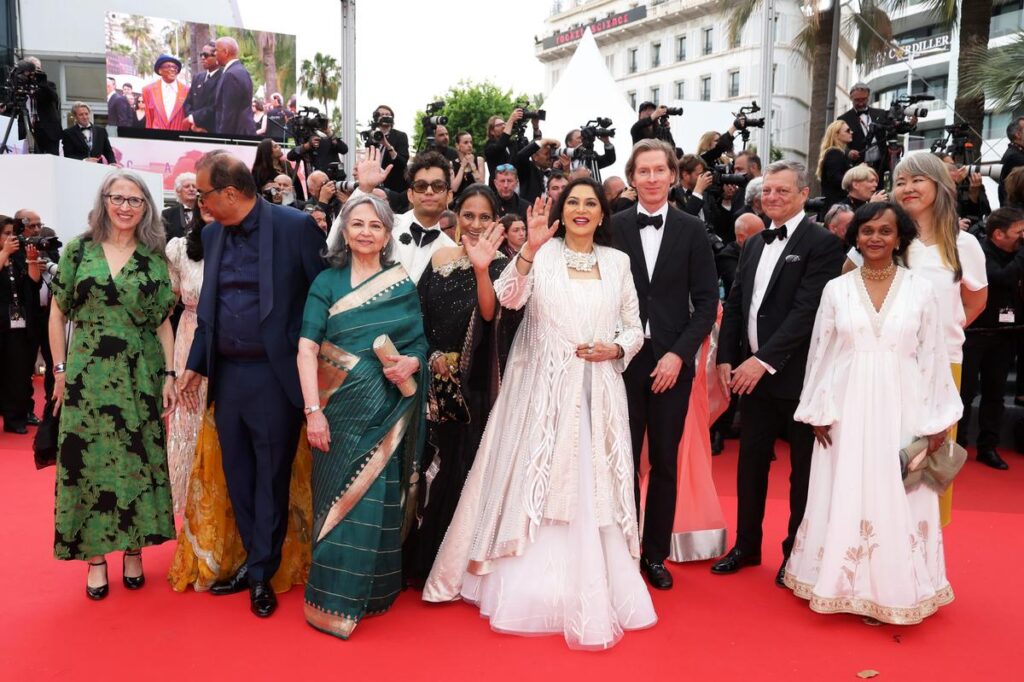By Tirthankar Mitra
KOLKATA: A deceptively simple tale of four city bred youth leaving behind the concrete jungle and slumming with a vengeance amidst the forests of Palamau in what was then Bihar turned out to be one of the finest films directed by Satyajit Ray — Aranyer Din Ratri. When it was released 56 years ago, people made a beeline for the theatres in Kolkata, while critics were almost at a loss for words in its praise.
Of late, the release of its restored version at Bunuel theatre, Cannes during the current film festival, drew a full house. It was a clear pointer to the fact that class is permanent as restored films struggle for a big audience. The audience reaction after Ray’s timeless work was screened at the classic section left no one in any doubt about the French cinephiles admiration. Sharmila Tagore and Simi Garewal were at the festival as resplendent representatives of the cast of the film.
Under Ray’s direction, the film became an allegory and a sharp comment. Everything came together so beautifully. The film explores the themes of alienation, modernity and complexities of human relations. If mindset and actions of the four city slickers are under the focus, other characters move in enriching the mosaic of interaction between the protagonists and the nature around them.
One and all, the men and women confront the realities they thought they had discarded. As the holiday ends and the quartet return to what was then known as Calcutta, Ray known for his mastery of blending emotions leaves a subtle question hanging; have the young men returned as changed nay better individuals.
Aranyer Din Ratri explores the contrasting world of city dwellers and tribal people. The impact and weightage of modernity in a back of the beyond area comes under focus when a young man sets fire to a English daily in a symbolic act signifying severance of links with their city life whose daily routine includes reading a newspaper. The film stands out for its realistic portrayal of basic human nature. In seemingly effortless approach, Ray lays bare the matters lying in the deepest part of the heart of each protagonist.
A short break from the citified life becomes a tryst of self realisation found expression on the screen. As the four young men and two beautiful women of almost the same age played a memory game in which the name of then Congress stalwart Atulya Ghosh and a choice was asked to be made between “Helen of Bombay” and “Helen of Troy’ seemed to inject seriousness and levity which is so beloved of the Gauls and the rest of the world.
Simi Garewal, usually at home in the role of a chic society lady who was chosen by Ray to play Duli, a devil may care tribal girl. Sharmila, on the other hand, who had started her film career in Ray’s Apur Sansar and conquered dizzy heights in Bombay films thereafter charmed the audience as an introspective young lady haunted by the memories of her late mother who was burnt and later the passing away of her brother.
The film got the kiss of life from Martin Scorsese’s Film Foundation and Shivendra Singh Dungarpur’s Film Heritage Foundation. With fresh sub-titles, it took six years of coordination between various stakeholders. Simi recalled the film being shot in a forest sans electricity and phones. But the film crew which included Soumitra Chatterjee making a style statement in dark glasses was unfazed
For they were in an euphoria. Everyone was aware they were part of making of a classic in celluloid participating in which happened to be an opportunity of a lifetime. Working with one of the greatest directors of the world was an honour. It was all the more so as the great man carried his fame lightly.
It was a take on the man-woman relationship in the backdrop of s forest. It has not gone stale till date. It brought back memories of an era when cinema was seen in theatres. People sat comfortably in their seats in the dark as the lines blurred between make believe and reality. (IPA Service)




 OBC Leader, NCP’s Chhagan Bhujbal Back In Maharashtra Cabinet
OBC Leader, NCP’s Chhagan Bhujbal Back In Maharashtra Cabinet 